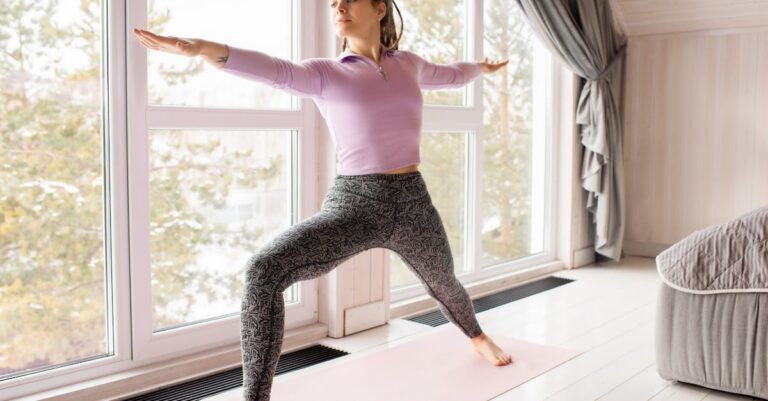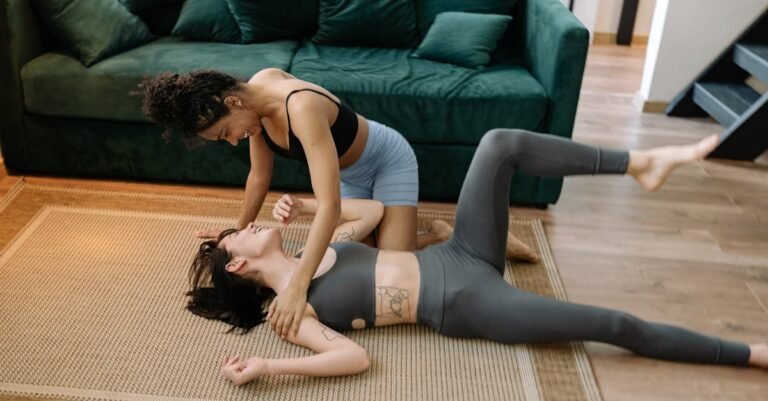Ever feel like your joints need a little WD-40? You know, that feeling when standing up from the couch makes you sound like a bowl of rice crispies, or your knees complain loudly about taking the stairs? If you’re nodding along, you’re definitely not alone. Stiff, achy joints can sneak up on us, maybe because we sit too much, getting older, or just haven’t been moving them enough. It can really put a damper on daily life! But here’s some great news: you don’t need fancy gym equipment or a personal trainer to help your joints feel happier and healthier. This article is your guide to awesome, simple exercises you can do right in the comfort of your own home. Stick around, and you’ll learn easy ways to keep your joints moving smoothly, reducing those creaks and groans so you can enjoy your day more.
Why Moving Your Joints is a Really Good Idea
Okay, so why bother with exercises? Isn’t resting better if things feel stiff? Actually, for most everyday joint stiffness, gentle movement is like magic. Think about a bicycle that’s been sitting outside – the chain gets rusty and hard to move, right? Your joints have their own natural ‘lubricant’ inside them, called synovial fluid. When you move, it’s like squirting oil on that rusty chain – the fluid gets circulated, helping everything glide better. Plus, moving helps keep the tissues around your joints flexible. Muscles act like shock absorbers for your joints, and keeping them reasonably strong takes some of the pressure off. It’s kind of a ‘use it or lose it’ deal – gentle, regular movement tells your joints, “Hey, we’re still needed!” and helps keep them in good working order.
Warming Up: Getting Ready to Go
Before you jump into any exercises, even easy ones, warming up is super important. It’s like letting your car engine run for a minute on a cold morning before driving off. A warm-up tells your body, “Okay, we’re about to get moving,” and prepares your muscles and joints. It increases blood flow and makes tissues more pliable, which can help prevent strains. You don’t need anything intense. We’re talking 5 minutes of simple stuff. Think about:
- Arm Circles: Stand up and make big, slow circles with your arms, forwards and backwards.
- Shoulder Rolls: Gently roll your shoulders up towards your ears, then back and down. Repeat a few times.
- Marching in Place: Lift your knees gently, like you’re marching slowly.
- Ankle Circles: Sit or stand (hold onto something if needed!) and make slow circles with one foot, then the other.
Just get the blood flowing a bit. It makes a difference!
Range-of-Motion Rockstars: Keeping Things Flexible
Range-of-motion exercises are all about gently moving your joints through their full, comfortable movement path. This helps maintain flexibility and keeps that joint fluid moving. Think about trying to reach for a jar on a high shelf – if your shoulder is stiff, you might not be able to reach it easily. These exercises help keep that ‘reach’. The key is gentle and slow – no forcing or jerky movements. Here are a few ideas you can do sitting or standing:
- Neck Tilts & Turns: Slowly tilt your head, bringing your ear towards your shoulder (don’t lift your shoulder!). Hold gently. Then slowly turn your head to look over one shoulder, then the other.
- Wrist Bends & Circles: Hold your arms out and gently bend your wrists up and down. Then make slow circles with your hands.
- Finger Taps: Touch your thumb to each fingertip on the same hand, one by one. Open your hand wide, then make a gentle fist.
- Knee Bends (Seated): While sitting, slowly straighten one leg out in front of you, then slowly bend it back down. Repeat with the other leg.
- Ankle Pumps: Point your toes down towards the floor, then pull them up towards your shin. Repeat slowly.
Do these regularly, maybe even a few times a day if you sit a lot. It’s like giving your joints a nice, easy stretch.
Gentle Strength Builders: Supporting Your Joints
Remember how muscles help take pressure off joints? Building a little strength around them provides better support. We’re not talking about becoming a bodybuilder here! Simple bodyweight exercises can do wonders. Focus on slow, controlled movements. Imagine your friend Sarah has slightly achy knees. Doing some gentle exercises to strengthen her thigh muscles (quads and hamstrings) could help support her knee joint, making walking feel easier. Try these:
- Wall Push-ups: Stand facing a wall, about arm’s length away. Place your hands on the wall, slightly wider than your shoulders. Slowly bend your elbows and lean your body towards the wall, keeping your back straight. Push back gently.
- Chair Squats: Stand in front of a sturdy chair. Slowly lower yourself as if you’re about to sit down, maybe just tapping the chair seat lightly (or actually sitting if needed), then slowly stand back up. Keep your back straight and knees behind your toes.
- Leg Raises (Side & Back): Stand tall, holding onto a chair or wall for balance. Slowly lift one leg straight out to the side, keeping it straight. Lower slowly. Then, lift the leg straight back (don’t arch your back!). Lower slowly. Repeat on the other side.
- Pelvic Tilts: Lie on your back with your knees bent and feet flat on the floor. Gently flatten your lower back against the floor by tightening your stomach muscles and slightly tilting your pelvis up. Hold for a few seconds, then relax.
Start with just a few repetitions and build up gradually as you feel stronger.
Cooling Down & Stretching: The Finishing Touch
Just like warming up is important, cooling down and stretching afterwards helps too. It allows your heart rate to return to normal gradually and can improve flexibility. Stretching after your muscles are warm can feel really good and helps maintain or even increase your range of motion over time. Hold each stretch gently – you should feel a pull, but not pain. No bouncing!
- Hamstring Stretch (Seated): Sit on the edge of a chair. Straighten one leg out in front of you, heel on the floor, toes pointing up. Keeping your back straight, gently lean forward from your hips until you feel a stretch along the back of your thigh. Hold for 15-30 seconds. Switch legs.
- Quad Stretch (Standing): Stand near a wall or chair for balance. Bend one knee and grab your ankle or foot behind you. Gently pull your heel towards your bottom, keeping your knees close together. Feel the stretch in the front of your thigh. Hold for 15-30 seconds. Switch legs.
- Calf Stretch: Stand facing a wall with your hands on it for support. Step one foot back, keeping that leg straight and your heel on the floor. Bend your front knee. Lean forward gently until you feel a stretch in the calf of your back leg. Hold for 15-30 seconds. Switch legs.
Ahhh, doesn’t that feel better?
The Most Important Rule: Listen to Your Body!
This is maybe the biggest takeaway. Your body is smart and gives you signals. Exercise should feel good, or at least like you’re doing something positive – it shouldn’t hurt. If you feel sharp pain, stop! Don’t push through it. Maybe the exercise isn’t right for you, or maybe you need to modify it (like not lifting your leg as high, or not leaning as far). It’s always better to do a little bit regularly than to overdo it and end up sidelined. Think about it like this: You wouldn’t keep driving your car if the oil light was flashing and making scary noises, right? Sharp pain is your body’s flashing light. Pay attention! Consistency is way more important than intensity when it comes to joint health. Little and often is the name of the game.
So, there you have it! Taking care of your joints doesn’t have to be complicated or require a gym. We’ve covered why moving is so beneficial – keeping things lubricated and supported. Remember the importance of warming up before you start and cooling down with some nice stretches afterwards. We looked at range-of-motion exercises to maintain flexibility, like keeping a door hinge working smoothly, and gentle strengthening moves to give your joints the support crew they need. Most crucially, always, always listen to what your body tells you – avoid pain and focus on gentle, consistent movement. By adding some of these simple exercises into your routine, you can help your joints feel less creaky and more happy, letting you move more freely and enjoy your everyday activities that much more. Start small, be patient, and your joints will thank you for it!










